What to see at the Louvre in just 90 minutes? These Louvre highlights cover the museum's most iconic artworks, perfect for first-time visitors. From Leonardo's enigmatic Mona Lisa to the triumphant Winged Victory of Samothrace, this self-guided audio tour takes you through nine must-see masterpieces. Each artwork is chosen for its historical importance, artistic beauty, and cultural impact. Follow this curated route to experience the best of the Louvre without feeling overwhelmed by its vast 73,000-square-meter collection.
Listen to this tour in our app →Plan Your Visit
The 9 Essential Masterpieces
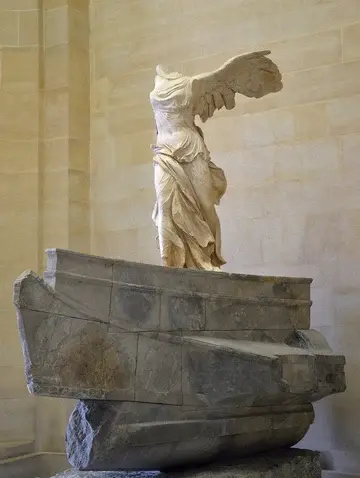
Winged Victory of Samothrace
Unknown Hellenistic sculptor
This marble goddess once stood at the prow of a ship, celebrating a naval victory around 200 BCE. Even without her head or arms, she conveys motion, triumph, and the power of the sea breeze. Her flowing robes seem to move in the wind, making her one of the most dynamic sculptures in ancient art. Located at the top of the Daru staircase, she's often the first masterpiece visitors encounter.

The Wedding at Cana
Paolo Veronese
The largest painting in the Louvre at 70 square meters. Veronese transforms Christ's first miracle into a spectacular Renaissance feast with over 130 figures. Painted in 1563 for a Venetian monastery, it now hangs opposite the Mona Lisa. The vibrant colors and architectural grandeur showcase Venetian painting at its peak.
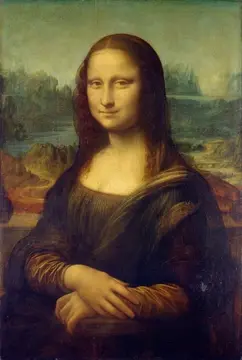
Mona Lisa
Leonardo da Vinci
The world's most famous painting. Her mysterious smile and lifelike gaze revolutionized portrait painting. Leonardo's mastery of sfumato — the soft blending of colors — gives her an almost breathing presence. Painted between 1503-1519, she has captivated viewers for over 500 years. Her enigmatic expression changes depending on where you stand, making each viewing unique.
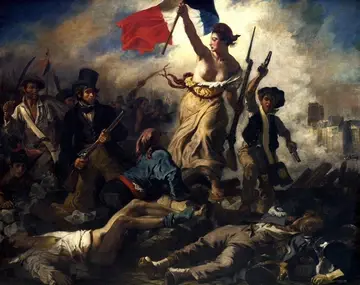
Liberty Leading the People
Eugène Delacroix
Painted after the 1830 July Revolution, this iconic work merges allegory and reality. Liberty strides over the barricades as both goddess and citizen, carrying the French tricolor flag into battle. The painting captures the revolutionary spirit of 19th-century France and has become a universal symbol of freedom. Delacroix painted himself into the scene as the man in the top hat.
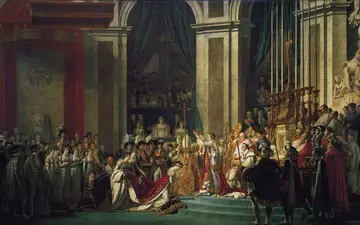
The Coronation of Napoleon
Jacques-Louis David
David transforms Napoleon's 1804 coronation into timeless political theater. At over 6 meters wide, every gesture and fold of fabric tells a story of ambition and imperial power. Napoleon crowns his wife Josephine rather than himself, showing strategic restraint. The painting took three years to complete and immortalizes the birth of the French Empire in meticulous detail.
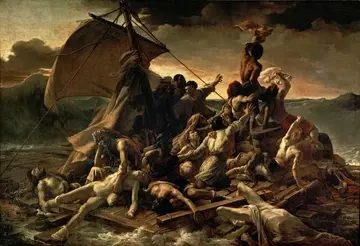
The Raft of the Medusa
Théodore Géricault
A haunting masterpiece of survival and despair based on the real 1816 shipwreck of the French naval vessel Medusa. Géricault interviewed survivors and studied corpses to achieve raw realism. The painting shows desperate survivors spotting a distant rescue ship, capturing both hope and horror. This work launched French Romanticism and caused a scandal when first exhibited in 1819.

Venus and the Three Graces Presenting Gifts to a Young Woman
Sandro Botticelli
A Renaissance jewel painted around 1483-1485 showcasing Botticelli's signature elegance. The soft movement of fabrics and delicate figures embodies the harmony and beauty of 15th-century Florence. Venus and the Three Graces present gifts to a young bride in a scene of divine generosity. The flowing lines and graceful poses are quintessentially Botticelli.

Psyche Revived by Cupid's Kiss
Antonio Canova
This neoclassical sculpture captures the precise instant love restores life to Psyche. Carved from marble in 1793, Canova's masterpiece turns cold stone into a tender moment of breath and awakening. The light touch between Cupid and Psyche, the delicate positioning of their wings, and the flowing drapery showcase Canova's unmatched technical skill. It's considered one of the greatest sculptures of the neoclassical period.

Venus de Milo
Unknown Hellenistic sculptor
Carved over two millennia ago on the Greek island of Milos, this serene goddess embodies the classical ideal of beauty. Discovered in 1820, she became an instant sensation in Paris. Her missing arms only heighten the sense of mystery and timeless perfection — scholars still debate what her original pose might have been. The subtle twist of her torso and the delicate draping of her garment showcase the sculptor's supreme skill.